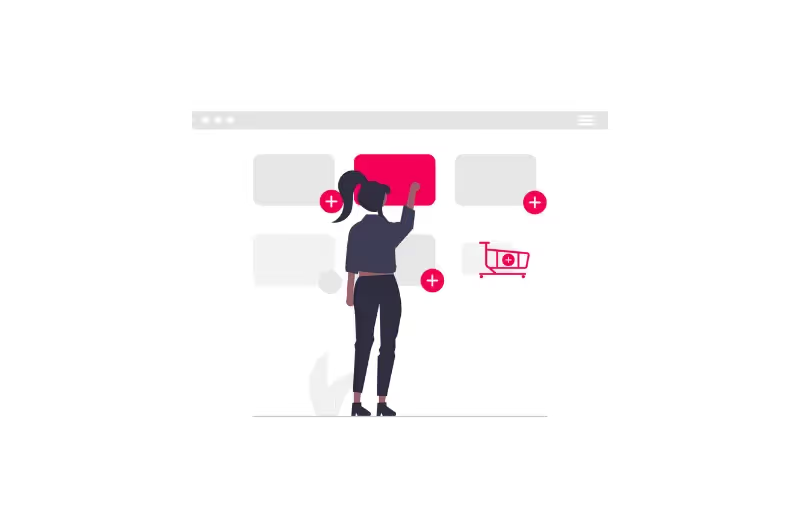Top 5 generative AI trends in marketing 2025

eCommerce is facing 2025 at a time of digital maturity, regulatory pressure is increasing and consumers are increasingly demanding.
When competition is no longer measured only in price or catalog, the key is to offer fast, personalized and sustainable experiences.
In this article we analyze 5 trends that will influence the way you sell online in 2025. A starting point for deciding where to invest and how to adapt before change is mandatory.
A more demanding market
New technologies are changing buying expectations in B2B and B2C.
In Europe, and especially in Spain, electronic commerce is moving towards a more connected, demanding and regulated model.
Automation, personalization and efficiency mark the pace, while European regulations — from sustainability to data protection — require adaptation.
The consumer, on the other hand, demands experiences that are simple, fast and consistent with their values.
5 Key Trends in eCommerce
Digital commerce is growing, but so are the cost of acquiring customers and the pressure on margins. The answer is not to open more channels without judgment, but to coordinate marketing, product and operations to activate few levers with real impact, recurrence and profitability.
At Novicell, we summarize in seven lines of action what is already yielding results in B2C and B2B, with a practical and applicable approach starting today.
1. Applied AI to sell more
Generative artificial intelligence it's no longer a futuristic promise: in 2025, companies that use it in a targeted and controlled way are seeing real improvements in conversion, average ticket and business efficiency.
This has gone from being an experimental tool to a resource integrated into key processes, provided that there is human review to ensure quality, coherence and regulatory compliance.
- B2C: Use AI to help customers find and discover more products, generate fast but revised content, send messages at the right time, and respond faster without losing brand style.
- B2B: Apply AI to make error-free budgets and configurations, prepare draft proposals, know what the next step is with each client and improve the catalog with complete data connected to your PIM.
This year is key because solutions have become more accessible, but also because the competition that already applies them gains speed and precision.
.avif)
2. DPP-ready product data
If you sell products or materials in Europe, the Digital Product Passport (DPP) It will soon be an obligation.
It will require demonstrating the origin, materials, processes and traceability of each reference, with standardized and accessible data. It's not just a legal requirement: it will affect how you present your catalog, manage information, and respond to customers and distributors.
- B2C: The initial impact will be felt especially in fashion, footwear, home textiles, electronic products and appliances, where it will be mandatory to report in detail on composition, origin, manufacturing processes, repairability and recycling.
- B2B: It will affect manufacturers and distributors of industrial machinery, mechanical components, electrical equipment, construction materials and chemicals, among others. Here, the requirement will focus on component traceability, complete technical data sheets, compatibilities, certifications and ESG data.
The best way to arrive prepared is to have a Solid PIM: a single system for centralizing titles, descriptions, codes, materials, batches, manuals and content adapted to each channel and language.
Without this base, complying with the DPP and keeping operations up to date will be much more expensive.

3. Post-purchase that converts
The after-sales experience is today a real differentiator.
With the competition just a click away, the memory of the purchase outweighs the campaign that generated it. This is the time when it is decided whether the customer will repeat or not.
- B2C: Order tracking with your brand, simple returns, collection points and useful use/care emails.
- B2B: Order portal and RMA with traceability by order/packing slip, visible SLAs and cross-selling of compatible spare parts.
4. Omnichannel with strategy
For years, “being everywhere” seemed like a recipe for selling more. But reality has shown that without a plan, omnichannel can dilute efforts and cannibalize sales.
- B2C: It defines the role of each channel: the web for the relationship and its own data. Unify prices and content so as not to Cannibalize you.
- B2B: If you sell to medium or large companies, prepare punch-outs, catalogs by account and availability by warehouse. In vertical marketplaces, prioritize lines with rotation and margin.
5. Ready-to-connect technology
In 2025, the pressure to open markets, sell on more channels and better serve large customers is greater than ever.
If your technology isn't ready to be easily integrated—both with your own tools and with those of partners and customers—you'll waste time and opportunities in front of those who have solved it.
- B2C: Keep all product, stock and price information in one place and automatically connect it to your website, marketplaces and retail media. This way you reduce errors and you can test new channels quickly without redoing everything every time.
- B2B: Make it easier to sell to large accounts by connecting your system to theirs for orders, personalized prices and adapted catalogs. A well-integrated customer portal saves time on reorders, returns, and support.
A composable stack, ready for fast and secure integrations, accelerates releases, reduces errors and avoids redoing the work every time you add a channel or business partner.
.avif)
Apply with strategy
More than trends, these are strategic actions that are already yielding results this year.
Analyzing what works in the market allows us to identify what is worth adopting and what should be missed.
The value lies in adapting each action to the reality of your business and measuring its impact.
How Novicell Can Help You
At Novicell we have been developing projects for more than 20 years B2C and B2B eCommerce in sectors such as industrial, distribution and retail.
Our experience ranges from leading platforms to architectures Headless, adapted to complex and growing business models.
If you want to talk to our specialists and apply these actions in your business, contact us. We will be happy to help you find the most suitable solution for your company.
Cómo podemos ayudarte
Consulta los servicios con los que te ayudaremos a conseguir tus objetivos digitales.
.avif)